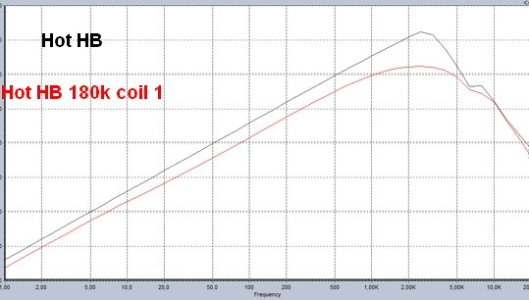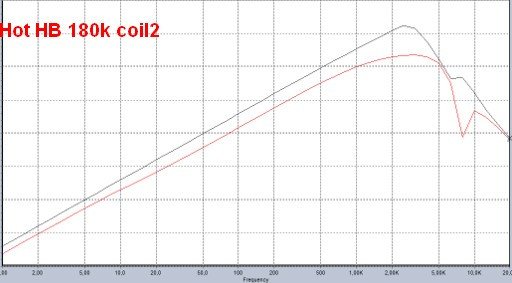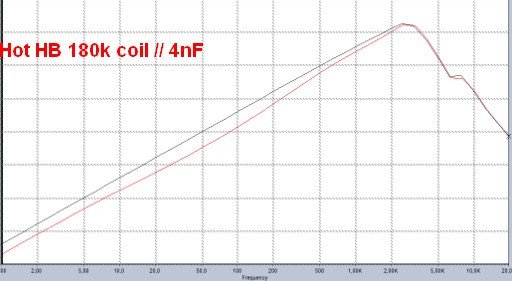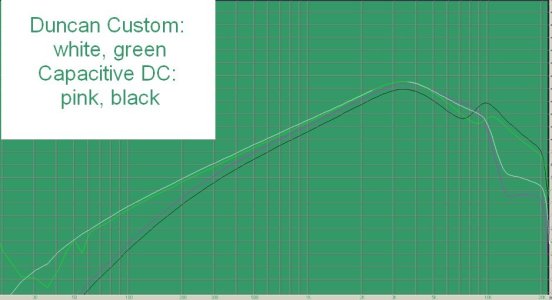To illustrate my reasoning process, I post below some sims that I've just botched.
Pic 1 shows the response of a 'Hot" HB with its first coil @180k.
Pic 2 shows the same thing with the second coil @ 180k.
Both show what happens if a damaged coil is purely resistive: it behaves like a limiting resistor, IOW like a lowered volume control...
Pic 3 shows one of the coil @180k + series capacitance of 4nf. In this case and as expected, the series capacitance is "reEQing" the pickup without altering its output level.
It scoops the mids because the series capacitance follows coil1. If series cap was after coil 2, it would cut the bass and bump the mids.



Again, FWIW: a nerdy attempt to share. ;-P
NOTE - I won't reveal the PU model used for these simulations in the name of intellectual property. Thx for your understanding. But I can tell that it mimics faithfully the behaviour of a "hot" HB + 4 wires cable.
EDIT- Below is the response of a Duncan Custom with a broken capacitive "coil 2" (pink and black lines = responses of each coil), compared to the response of an intact Duncan Custom (green and white lines). This time, it's a real measurement and not a sim.
The pickup was still working... as a high pass filter.






